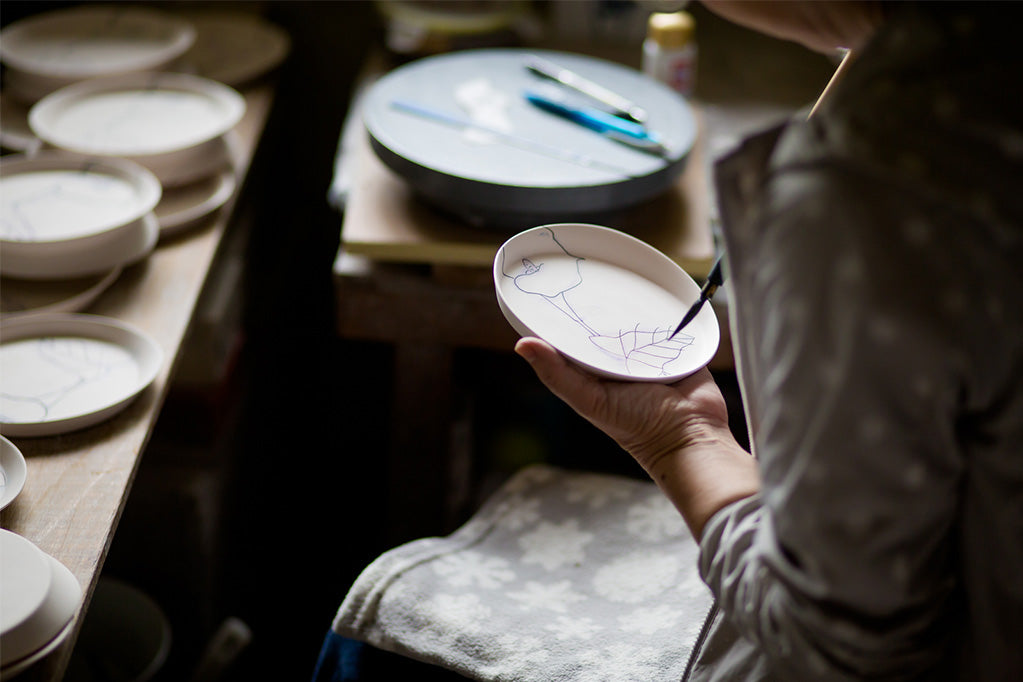

About Shingama
Introducing Shingama
Introduction

Shinano is a small pottery town located in the northeastern part of Seto City, among the mountains of Mikuniyama.
Shingama pottery is born in an atelier surrounded by rural mountains and farmland.
With the sounds of birds chirping and the breeze blowing, the clay is mixed, carefully shaped, and then each fired piece is lovingly painted.
What we strive to do is to create products that convey the warmth of handmade items.
The shapes that make you want to pick them up and the beautiful blue and white patterns express the "comfort" of everyday life.
history
history
Shingama is a Seto pottery manufacturer founded in 1919.
Starting with blue and white porcelain, which is a technique that uses the natural flavor of Seto-produced clay to paint on pottery,
Based on the concept of "blue and white porcelain kiln," the company has produced many attractive products up to the present day.
Seto is a region with such a long history that it has become synonymous with pottery.
The pottery industry began in this area as far back as the Heian period in the 11th century, and since succeeding in mass-producing glazed pottery, it has become renowned as Japan's largest pottery producing region.
Blue and white porcelain was first produced in Seto in the early 19th century.
At the time, Seto pottery was limited to earthenware, and was facing competition from porcelain produced in the Hizen region (Saga and Nagasaki), and porcelain production was an issue. Kato Tamikichi, known as the "Pottery Father" of Seto, established the mass production method of porcelain he had learned in Kyushu, and completed the first Seto porcelain blue and white porcelain ware.
Sometsuke is a technique in which a design is drawn on a white base using a pigment called gosu, whose main ingredient is cobalt oxide, and then the porcelain is covered with a glassy glaze and fired, causing the design to turn indigo blue.
The indigo color produced by gosu varies from kiln to kiln depending on the base material, glaze, and firing method.
We are particular about the selection of clay, glaze, and gosu to create a more beautiful contrast between white and indigo. One of our characteristics is the moist blue color that is achieved by adopting a firing method unique to the Seto region called "nerashi," which is maintained at a high temperature for a certain period of time.
When painting, we make full use of a technique called "dami" that is unique to blue and white porcelain.
The gosu is poured from a thick, large brush like a dropper onto the surface of the porcelain.
The diversity of the indigo color that can be expressed in various shades of blue using only one color, like a sumi-e painting, is a beauty that cannot be found in other vessels. Only the skills of craftsmen who have mastered the art over time can bring out the beauty of the indigo color.
Seto Sometsuke ware was designated as a traditional craft by the Minister of Economy, Trade and Industry in 1997.
The products' intricate shapes and beautiful paintings are loved and highly regarded not only in Japan but also overseas.




